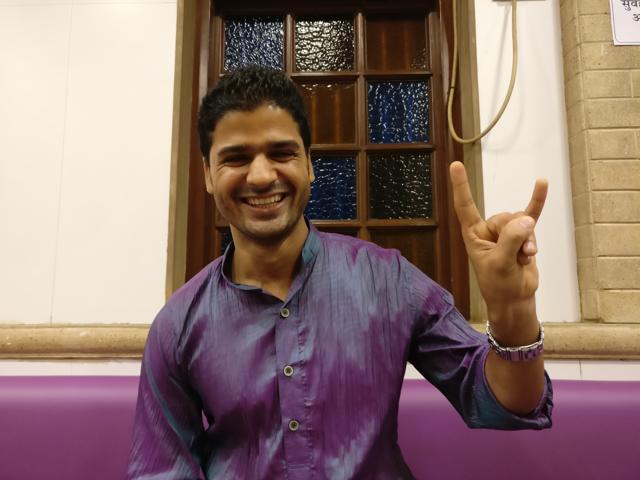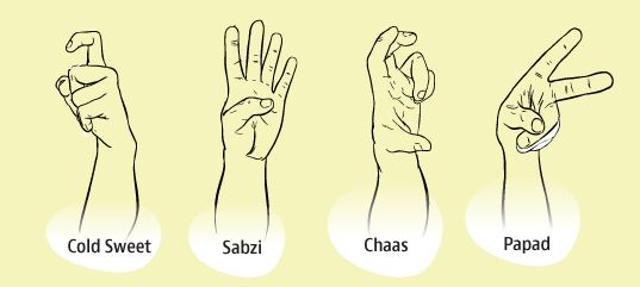Mumbaiwale: How do waiters know exactly when to replenish your thali?
The servers use a complex system of hand signals to communicate among themselves quickly and silently
If you’re enjoying an unlimited thali at any of Mumbai’s Gujarati and Rajasthani restaurants, you’re not looking up from your plate. Here’s what you miss: an army of waiters communicating wordlessly through hand-signals, relaying to each other that it’s time to refill your sabzi, that you prefer Jain kadhi or can be cajoled into yet another gulab jamun.


Gautam Purohit, who runs the 73-year-old, award-winning, Thaker Bhojanalay in Kalbadevi, says sign-language is easier than yelling service instructions over diners’ heads. “Each server is responsible for a particular item on your plate,” Purohit says. “He’s constantly relaying information to others so your plate is always full,” he says.
Take a look at some of the signs developed at Thaker. Maybe you can signal them yourself the next time you run out of roti.

CAN YOU READ THE SIGNS?
When the Bomanjee Hormarjee Wadia Clock Tower on Perin Nariman Road in Fort was restored last year, media reports were understandably gushy.
The clock tower was erected in 1882 with money raised by public subscription to honour the sheriff and philanthropist Bomanjee Hormarjee Wadia. It was built with yellow basalt stone from Malad, while the sculptures and parapet cornices are made of grayish-blue basalt from Kurla.

But it had been neglected for decades – its clock face shattered, the hands and gas light stolen. But efforts by conservation architect Vikas Dilawari and the Kala Ghoda Association got the clock working again. The holy flame atop the tower had shed its ugly coats of paint and the stone work had been cleaned.
One mystery remained. What were those strange wedge-shaped symbols on the plaques on the sides of the tower? Reports attributed them to be a message in Old Persian Cuneiform script, copied from a rock inscription at Behistun in south-west Iran dating back to 520 BC.

But what do they mean? We asked Team Cuneiform, a group of Finnish enthusiasts of the script who run @cooleiform on Twitter, for help. They deciphered the symbols in no time at all.
Rachel.Lopez@htlive.com




